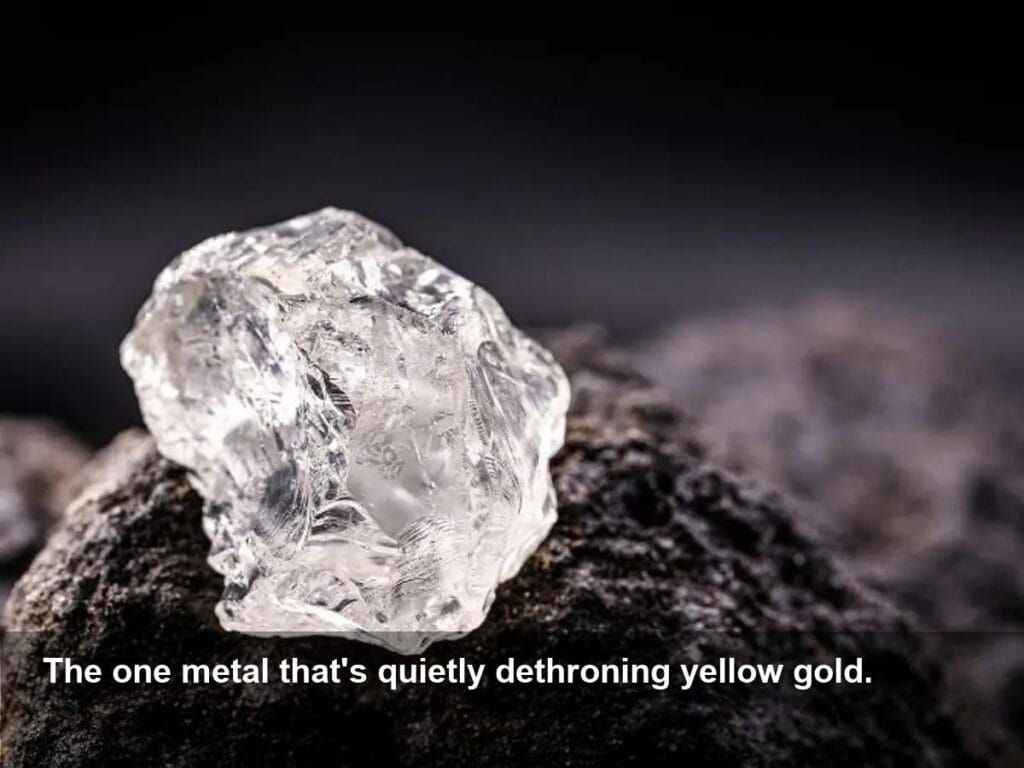White Gold’s New World Order: The Top 5 Nations

- China, Russia, Australia, Canada, and the United States are revealed as the top five producers of white gold globally.
- White gold’s popularity stems from its creation as a durable and elegant alloy, making it a leading choice for modern jewelry.
- The complex refining process involves mixing pure yellow gold with white metals and often plating it with rhodium for a brilliant finish.
- Beyond its use in luxury accessories, white gold’s properties make it valuable for various industrial applications.
The Global Shift to White Gold
In a market long-dominated by tradition, a significant shift is taking place. Consumers and industries are looking beyond classic yellow gold, turning their attention to its sleek, durable, and brilliant counterpart: white gold. This elegant metal isn’t found in nature but is the product of sophisticated alloying processes. A handful of global powerhouses are leading this charge, controlling the majority of the world’s supply. An analysis of global production reveals the five key nations at the forefront of the white gold boom.
The Titans of Production
While many countries contribute to the world’s gold supply, a select few have mastered the refining techniques necessary to produce high-quality white gold alloys on a massive scale. These nations leverage their vast mining operations and technological expertise to meet the soaring global demand.
H4: China: The Unrivaled Leader
China stands firmly at the top, commanding the largest share of the world’s gold production. Its immense refining capacity allows it to create vast quantities of white gold alloys, supplying both its massive domestic jewelry market and international buyers.
H4: Russia: A Precious Metals Powerhouse
With its extensive natural resources, Russia is a formidable force in the precious metals market. The country’s advanced metallurgical industry is pivotal in transforming raw gold into the pristine white gold alloys sought after for high-end jewelry and industrial uses.
H4: Australia: Mining and Refining Excellence
Known for its cutting-edge mining technology and high standards, Australia is another key player. The nation’s efficient extraction and refining processes ensure a steady supply of premium gold, which is then alloyed to create the durable and lustrous white gold popular worldwide.
H4: Canada and the US: North American Giants
Rounding out the top five, Canada and the United States are significant contributors to the white gold market. Their established mining industries and advanced refining facilities play a crucial role in the supply chain, catering to the strong demand across North America and beyond for this versatile metal.
The Art and Science of White Gold
Unlike yellow gold, which is mined in its characteristic color, white gold is a testament to metallurgical artistry.
H5: Creating the Perfect Alloy
The process begins with pure yellow gold, which is then mixed with white metals such as palladium, nickel, or manganese. This not only changes the color but also significantly enhances the metal’s strength and durability. To achieve its signature silvery-white sheen, most white gold jewelry is plated with rhodium, a rare and precious metal from the platinum group, which adds an extra layer of protection and brilliance. This intricate process is why the expertise of the top producing nations is so critical.
H5: More Than Just Jewelry
While renowned for its use in engagement rings and fine jewelry, white gold’s resistance to corrosion and its conductive properties make it valuable in specialized industrial fields, including electronics and dentistry. As technology evolves, the demand for this robust alloy is expected to grow, further solidifying the dominance of its top producers.
Image Referance: https://www.wionews.com/photos/-beyond-yellow-gold-10-countries-producing-the-most-white-gold-in-the-world-1762205072903

